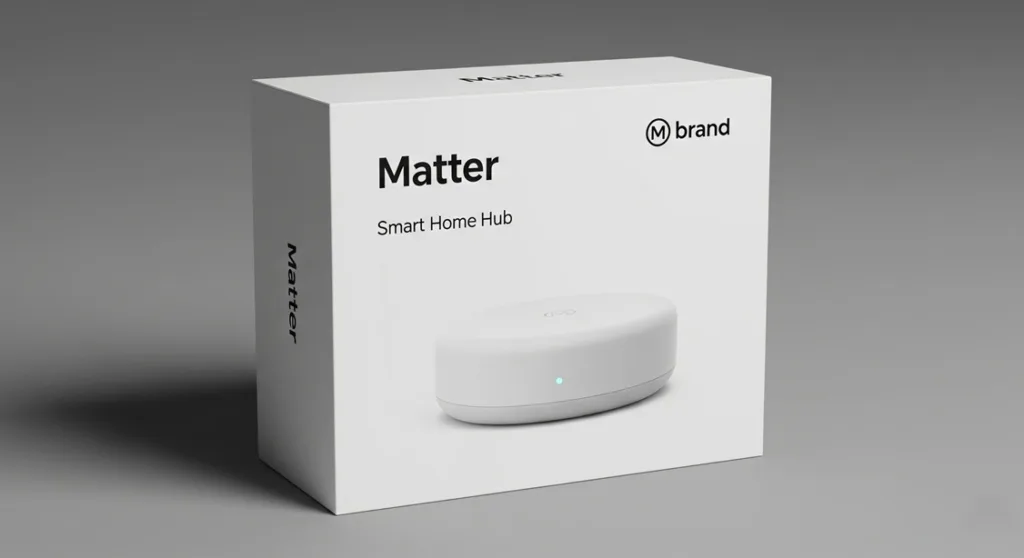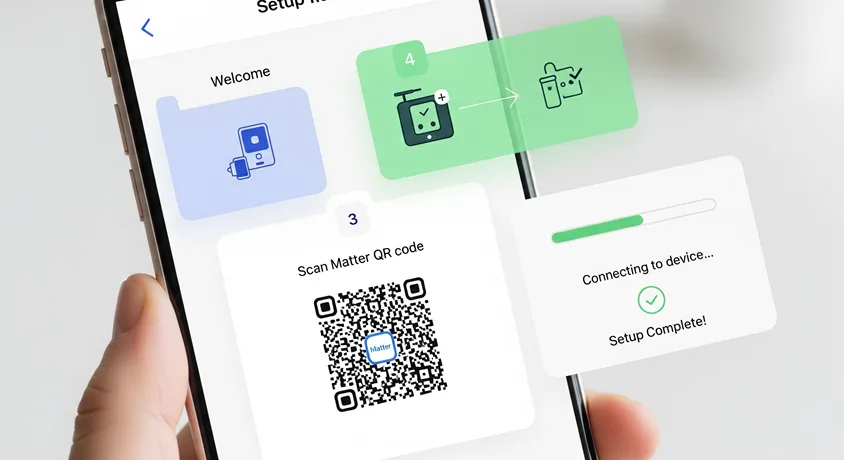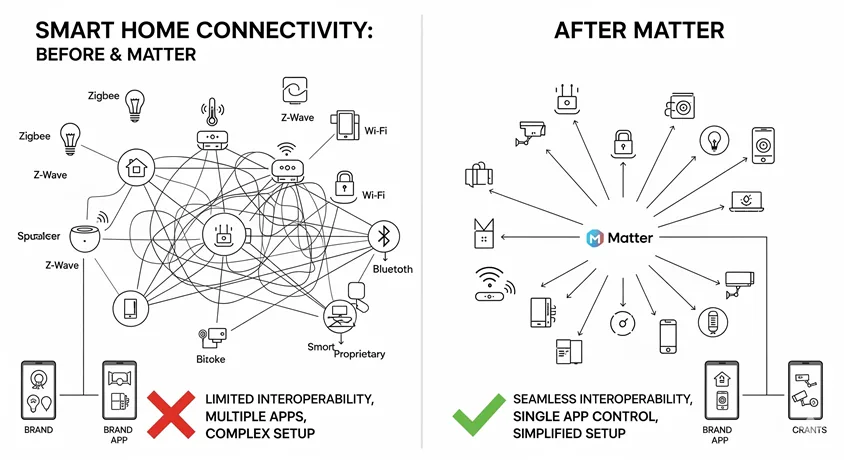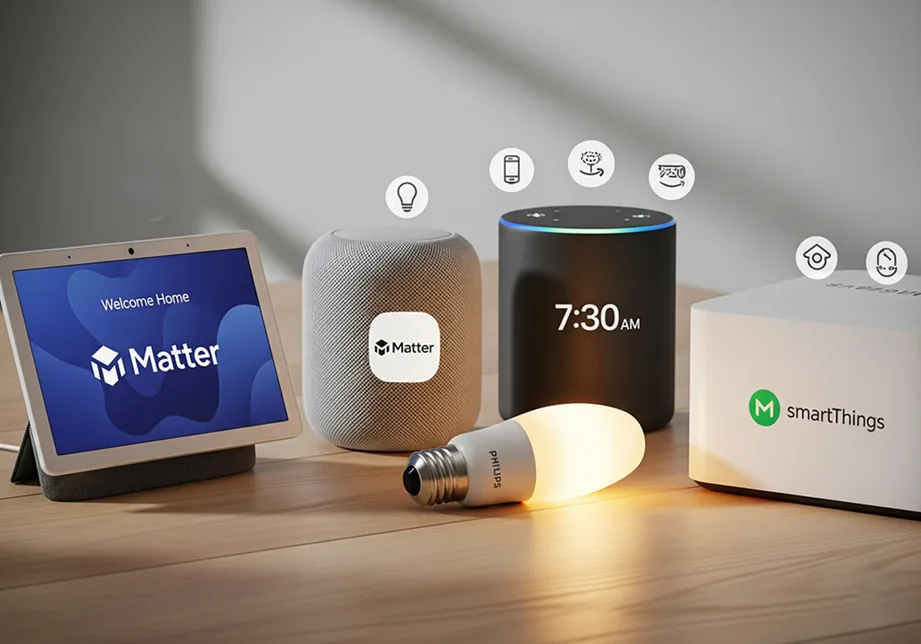Smart homes have made big progress. Back in the past, people used heavy remote controls and special hubs that didn’t work together. Now, we have voice helpers, sensors, and smart routines that handle daily tasks. But there’s still one annoying issue that hasn’t gone away: the ability of different devices to work with each other. Different brands often don’t play nicely together, forcing homeowners to juggle multiple apps, hubs, or even abandon certain devices altogether.
Enter the world of Matter: the future of smart home interoperability. Created by the Connectivity Standards Alliance (CSA), with support from major companies like Apple, Google, Amazon, and Samsung, Matter aims to solve the problem of device compatibility and bring all smart home devices together in one system. But what is Matter exactly, how does it function, and why is it so significant? Let’s explore the technology that could change the way our devices connect and interact with each other.
What is Matter and Why Does It Matter?
At its core, Matter is a new open-source connectivity standard designed to ensure that smart devices from different brands can work together seamlessly. Unlike past attempts, Matter isn’t just a protocol—it’s an industry-wide agreement supported by some of the biggest names in tech.
With Matter, your smart bulb, door lock, or thermostat doesn’t need to be locked into a specific ecosystem. Instead, if it carries the Matter logo, you know it will connect to any Matter-certified platform—whether that’s Apple HomeKit, Google Home, Amazon Alexa, or Samsung SmartThings.
This shift means fewer frustrations, reduced setup time, and a more future-proof smart home experience.

The Technology Behind Matter
To understand Matter: the future of smart home interoperability, it’s worth exploring how it actually works.
Cross-Platform Compatibility
Matter is built on Internet Protocol (IP), the same technology that powers the web. By using IP, devices can communicate over existing home networks (wifi, Ethernet, and even Thread for low-power IoT devices).
Security First
Security has always been a weak point in smart home adoption. Matter addresses this with end-to-end encryption, device authentication, and local control options, ensuring that your smart devices remain private and secure.
Thread and wifi Integration
For high-bandwidth devices like cameras, Matter uses wifi. For smaller, battery-powered devices like sensors and switches, it uses Thread, a low-power mesh networking technology that reduces latency and increases reliability.
Why the Smart Home World Needed Matter?
Before Matter, the smart home was a fractured landscape. You had to pick a side—Alexa, Apple HomeKit, or Google Home—and stay with it, because devices from one system usually didn’t work with devices from another. This caused a lot of annoying problems:
- Vendor Lock-in: If you spent a lot on one system, you were stuck.
- Changing systems meant replacing costly hardware.
- Compatibility Chaos: You had to constantly check if a new device was “Works with Alexa,” “Works with Google,” and “Works with HomeKit.” And often, it was just one, not all three.
- Complex Setup: Adding a new device could be a nightmare of different manufacturer apps, hubs, and connection procedures.
- App Fatigue: Your phone’s home screen was probably cluttered with dozens of different smart home apps, each for just one or two devices.
- Internet Dependency: Many cloud-dependent devices would stop working entirely if your internet went down. Ever tried turning on a light with a voice command during an internet outage? Total silence.
Matter completely rewrites this script. It gives consumers the ability to pick the best device rather than being limited to just the ones that work with their current setup, that fit their needs.
A Step-by-Step Guide to Embracing Matter
Moving to a Matter-ready smart home is simpler than you might imagine.
You don’t have to replace all your old devices. Here’s a straightforward way to begin:
Step 1: Check for Matter-Compatible Hubs
You’ll need a Matter controller, which is a hub, smart speaker, or display that can act as the brain of your Matter home. The good news is, you might already have one. Many recent smart speakers and displays from Amazon, Apple, and Google have been updated to act as Matter controllers and Thread border routers.
Examples of common Matter-ready hubs:
- Amazon Echo (4th Gen) and newer
- Apple HomePod Mini and Apple TV 4K
- Google Nest Hub (2nd Gen) and Nest wifi Pro
- Samsung SmartThings Station
Step 2: Look for the Matter Logo on New Devices
When you’re shopping for new smart devices, keep an eye out for the distinctive Matter logo—three arrows pointing toward a central point. This logo is your guarantee that the product is certified to work with any Matter ecosystem. The list of Matter-enabled devices is growing all the time, from smart plugs and light bulbs to locks and sensors.
Step 3: Upgrade Existing Devices (Where Possible)
Some manufacturers are updating existing hardware to support Matter through a simple over-the-air (OTA) software update. Check with your current device manufacturers to see if your products are on the list for a firmware update. Even if they’re not, companies like Philips Hue and Aqara have released updated hubs that act as Matter bridges, bringing your older, non-Matter devices into the new ecosystem.
Step 4: Add Your First Matter Device
When you get a new Matter device, the pairing process is super straightforward.
- Power it on: Plug in or power up your new Matter device.
- Open your chosen app: Launch your preferred app, like Apple Home, Google Home, or Amazon Alexa.
- Start pairing: The app should automatically detect the new Matter device nearby. If not, look for an “Add Device” or “Add Accessory” button.
- Scan the QR code: Use your phone’s camera to scan the Matter QR code on the device or its packaging.
- Assign and name: Follow the on-screen prompts to assign the device to a room and give it a custom name. That’s it—you’re done!

Real-Life Examples of Matter in Action
Scenario 1: The Universal Light Switch
You buy a Matter-enabled smart switch. Whether your home runs on Alexa, Google Home, or HomeKit, the switch integrates instantly, no extra hub required.
Scenario 2: Cross-Brand Automations
A Matter-certified motion sensor from Eve can now trigger a Samsung smart bulb and an Amazon Echo routine at the same time.
Scenario 3: Future-Proof Smart Home
You start with Alexa today, but decide to move to Apple HomeKit next year. Your Matter-certified devices migrate with you—no need to replace everything.

Challenges and Limitations of Matter
While Matter: the future of smart home interoperability sounds revolutionary, it’s not without hurdles:
- Limited Device Categories (for now): Early Matter support focuses on lights, plugs, switches, thermostats, locks, and sensors. Cameras and appliances are still pending.
- Firmware Delays: Some older devices may never receive Matter updates.
- Consumer Awareness: Many users are still unaware of Matter, meaning adoption will take time.
FAQs
Conclusion
People have dreamed of a fully connected smart home for years. That dream is becoming real now, with Matter, the future of smart home interoperability is here. By bridging ecosystems, enhancing security, and simplifying setup, Matter is designed to transform how we live with technology.
If you’re planning to upgrade your home, keep an eye out for the Matter logo—it may just save you from years of frustration and unlock the seamless, future-proof smart home you’ve always wanted. While Matter is designed to bring everything together in the smart home world, it’s important to remember that older systems like Zigbee and Z-Wave are still used in many devices today. If you’re wondering how these systems compare to Matter and if they’ll stay useful in the future, you can read our full guide that explains Zigbee and Z-Wave.
What do you think about Matter? Are you excited to try it out? Please share your thoughts in the comments below, and let’s discuss how this new standard could change our everyday lives.


